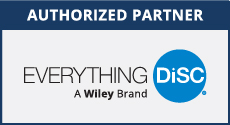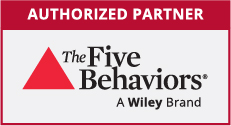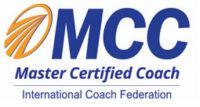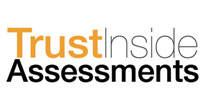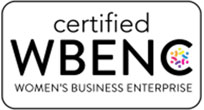People-Whispering Tip
“I’d rather be a failure at something I love than a success at something I hate.” ~ George Burns
“The biggest mistake that you can make is to believe that you are working for somebody else. The driving force of a career must come from the individual. Remember: Jobs are owned by the company, you own your career!” ~ Earl Nightingale
“If you have to support yourself, you had bloody well find some way that is going to be interesting.” ~ Katherine Hepburn
“Would I ever leave this company? Look, I’m all about loyalty. In fact, I feel like part of what I’m being paid for here is my loyalty. But, if there were somewhere else that valued loyalty more highly, I’m going wherever they value loyalty the most.” ~ Dwight Schrute, from the TV show “The Office.”
Can People Really Become Passionate About Their Work AND Their Workplaces?
As a transformational leadership development professional, I have worked with a wide variety of organizations to help promote healthier corporate cultures and effective leadership behaviors. Regardless of size, industry, or geography, my colleagues and I have discovered some common leadership questions and challenges.
Common Leadership Challenges
These questions/challenges include:
- How can I create an environment where people want to come to work and give their best every day?
- How do I bring out the best in others as well as in myself?
- How do I make sure that people care about the company they are working for as well as the work they do?
- How can I get my team members aligned on the critical decisions that arise so that we are cohesive and effective in producing results as individuals and for the organization as a whole?
Perhaps you can relate to some of these questions and challenges regardless of where you are in your leadership journey.
Many of these questions and challenges fall into the generally accepted business terminology of “employee engagement.” The term refers to an employee work environment (including virtual workplaces) in which employees are motivated, excited, thoroughly involved and engrossed in their work and personal contribution such that they are willing to offer their energy and commitment to achieve work goals.
Why is This Important?
Let’s face it. At the end of the day, business is about performance (theoretically so is health care, education, and government but that is another story for another time). And today, most business leaders now accept that engaged employees will be more productive and that the most successful firms tend to have more engaged workforces.
In fact, Harvard Business Review dedicated an entire issue (January/February 2012) to the concept of happiness and the workplace and its impact upon performance. The subtitle was “how employee well-being drives profits.”
Likewise, the Gallup Corporation which surveys engagement levels around the world on an ongoing basis has demonstrated that “engaged organizations have 3.9 times the earnings per share growth rate compared to organizations with lower engagement in the same industry.”
Alex Edmans of the Wharton School of Business has also found that high employee engagement has a significant positive impact on the equity price of listed companies relative to companies with lesser engagement levels.
Hopefully now you are intrigued if not convinced about the link between employee engagement and performance and want to learn more about how to create it where you work.
Before we can create more of anything, we first need to look at exactly what it is we are wanting to create. We first need to look at what it really means to be “engaged.” Is there a distinction between engagement and passion that we need to discern?
Employee Engagement versus Employee Passion?
My colleagues and associates at Integro Leadership have done some interesting, fresh, and valuable research to answer this question. Instead of looking at engagement per se, this white paper addresses the issue of employee “passion.” Are people passionate about the work they do only or are they also passionate about the organization – its values, the senior leadership, etc.? In other words, are people fully emotionally connected and passionate beyond being just “engaged?”
Keith Ayers and his colleagues at Integro wanted to understand the difference between passion for the job and passion for the employer. It follows that people who are passionate about both their work and their employer are more likely to be committed to and more productive in the organization overall. If people are only passionate about what they do or their day-to-day work and not the organization, they could easily do it elsewhere if given the opportunity. The quote from the TV show “The Office” at the beginning of this article makes this point in a “tongue-in-cheek” but valid way.
Integro Learning tested the idea that most employees are passionate about what they do, but that many are not passionate about their organization by surveying over three thousand employees at a variety of organizations in the US and Australia.
The Findings Reveal Good News and Bad News
The findings revealed that 86.5% of the respondents were at the very least passionate about their job and the work they do. The bad news is, of the passionate employees, just under half identified themselves as passionate about their job, but NOT the organization. In short, these likely to be “high-potentials” are not 100% committed to their organizations. As a result, there is an enormous opportunity to close this gap so as not to lose these people to a competitor.
Results like these point to a clear threat to productivity, talent retention, and the bottom line.
So what can be done about it?
The Common Denominator is Interpersonal Trust
For the employees who said they were passionate about the job and not the organization, the question of what their managers and senior leaders could do to improve upon the situation was posed. The primary drivers behind “passion advocates” or those who were passionate about both their jobs and the organization were indicated by yes answers to the following survey questions:
- We have high standards of honesty in everything that we do.
- The work I do is meaningful because its helps my organization fulfill its mission.
- My immediate manager or supervisor trusts me and treats me with respect.
It is important to understand that people make judgments about how trustworthy their leaders are based on their perception of what their leaders do, not on what they say or what they intended to do.
How to Bridge the Gap
So what can you as a leader do to help bridge the “passion deficit?”
Three primary areas to focus on include:
- Increase honesty and transparency in all dealings with employees and customers.
- Help all employees understand the purpose of their jobs and how it supports the purpose or mission of the organization.
- Train and encourage managers and supervisors to trust their staff and to treat them with respect through an understanding of interpersonal style differences (DiSC) and by helping to develop their leadership skills through training and coaching.
Likewise, my colleagues at Integro Learning have an Employee Passion Survey that can help you to measure the levels of employee passion in your organization. You can determine whether or not your people are passionate about their jobs and their workplace. In other words, you can assess your own “Employee Passion Deficit.”
Knowledge is power – with this knowledge, we can assist you in taking the appropriate steps to create a workplace where people want to come to work and give their best every day.
To learn more and for assistance in cultivating healthy, engaged, emotionally intelligent leaders, teams and Responsibility-Based Cultures, please call us at 404-327-6330 or email me at Laura@lauraadavis.com.
DiSC® Assessment Application(s)
1) Webinar Replay for the “Building and Fostering a Cohesive Team: Your Ultimate Competitive Advantage”
Best-selling author Patrick Lencioni has joined forces with Wiley (formerly Inscape Publishing) to offer this excellent process for building effective teams.
Teamwork is the lifeblood of an effective organization. Unlocking the code to getting groups of people to work together in high-performing and joyous ways is the key to a profitable and sustainable corporate culture.
The process consists of an individual and team assessment based upon Lencioni’s time-tested, proven model. The accompanying Facilitator Kit walks you through his research-based model to uncover where your team’s strengths and areas for growth and development lie.
To take advantage of this well-designed, time-tested method to unleash your team’s potential, call our office at 404-327-6330 or email Laura@lauraadavis.com.
2) The 363 for Leaders 360 Degree Assessment Process and Profile Report
Finally, a 360 for DiSC® users! But Everything DiSC 363® for Leaders isn’t just any 360. It combines the best of 360s with the simplicity and power of DiSC, plus three personalized strategies for improving leadership effectiveness. The result is a 360° experience that’s more productive and satisfying.
So how is 363 different?
First, it takes the “sting” out of 360 feedback.
For many leaders, 360s can be a frustrating experience. Open-ended comments can be unfocused and unhelpful and can even derail the learning process. With our exclusive selectable comments feature, CommentSmart, raters can give focused, balanced, constructive feedback—that the leader can actually use.
Second, it is easier to understand and use.
Everything DiSC 363 for Leaders isn’t a collection of dry spreadsheets and charts without any explanation or story. Clear visuals and a conversational narrative style interpret and explain the data, making the report easy to understand and use.
And finally, this 360 answers the question “Now what?”
With a lot of 360s, the leader’s response can be, “Now what?” Everything DiSC 363 for Leaders answers that question by giving leaders their next steps with three things they can focus on now.
Click here for a Sample 363 for Leaders Profile.
3) The Coaching Clinic Workshop: Coaching Skills for Leaders and Managers
The Coaching Clinic is a two-day leadership development program designed to train managers, executives, leaders, and supervisors to use coaching skills in their work relationships. There is also a half-day version available for executives.
Developed by Corporate Coach U, this program allows participants to:
- Discover coaching as a powerful leadership and management development model.
- Experience and practice “state of the art” coaching techniques.
- Understand the structure and process of integrating a “Coach Approach” as a leader
- Apply the learning within the workplace right away.
4) The 8 Dimensions of Leadership: DiSC Strategies for Becoming a Better Leader by Jeffrey Sugarman, Mark Scullard, and Emma Wilhelm
 We all approach leadership from a unique starting point – a combination of our own psychological make-up, intelligence, training, and experience. When anyone strives to grow as a leader, they need to stretch their energy in new directions.
We all approach leadership from a unique starting point – a combination of our own psychological make-up, intelligence, training, and experience. When anyone strives to grow as a leader, they need to stretch their energy in new directions.
For example, a person may be promoted into a leadership role because of their outgoing nature and positive attitude. While this visionary style may prove inspiring, they might also need to develop their analytical side in order to be more successful at running a business.
The 8 Dimensions of Leadership Model described in the book is based on the DiSC model, a systematic way to understand the forces beneath the surface that drive our individual behavior.
In the last issue of this ezine, I promised to cover some of the lessons we can all learn from each of the 8 leadership styles: Pioneering, Energizing, Affirming, Inclusive, Humble, Deliberate, Resolute, and Commanding.
Let’s look at the strengths of the Inclusive Style of Leadership and the lessons we can learn from them.
First, let’s review the strengths of the Inclusive or “High S” Leader. Inclusive leaders are patient and accommodating. They have a soft-spoken, gentle demeanor and people recognize that they are genuinely interested in other peoples’ lives.
As a result, they create an environment that is both collaborative and understanding. Their rare gift for deep listening allows them to tap into the talents and ideas of the members of their team effectively.
The Strengths of Inclusive Leaders are that they:
- Tend to be very people-oriented.
- Readily create a warm, safe working environment.
- Are able to overlook peoples’ flaws and are very accepting.
- Tend to deliver reliable results.
- Are often great listeners.
- Tend to be patient.
- Are willing to compromise.
- Tend to show appreciation for others’ contributions.
What can those of us who are not so naturally Inclusive learn from those with this predominant, natural leadership style?
The three lessons we can learn are:
- There has never been a leader who succeeded without the support of others so be open to the ideas of others.
- Your words and emotions as a leader carry a lot of weight so monitor your emotional output mindfully.
- Listening is easy to talk about but hard to do so work on your listening skills and attitudes.
The ultimate goal of understanding your leadership style is to broaden your repertoire beyond your comfort zone/default setting so that you can make the best choice of leadership style and behavior based upon the needs of any given situation.
There is a four step process for using this information to improve your leadership effectiveness as follows:
- Discover Your Primary Leadership Dimension.
- Learn about the Psychological Drivers, Motivations, and “Blind Spots” Typical of Leaders with Your Style.
- Reflect on What Really Matters Most in your Leadership Development Right Now.
- Learn Leadership Lessons in the Areas in Which You’d Like to Grow and Expand.
Stay tuned for future webinars and trainings which will delve into The 8 Dimensions of Leadership Model so you will know how to apply it for your own, and your team’s leadership development needs.
For more on how to increase your organization’s effectiveness using the appropriate Everything DiSC profile and/or training materials for your unique needs, please call us at 404-327-6330 or email me at Laura@lauraadavis.com.
Transformational Coaching Tip: Becoming More Inclusive
Whether you are naturally an inclusive style leader or not, here are some tips to help you build upon the strengths of this style.
Tips for Becoming More Inclusive:
- Show people that you are open to their ideas by remembering to pause to actually evaluate the idea.
- Acknowledge the idea even if you can’t stand it!
- Make a point to attribute ideas and contributions to the appropriate sources.
- Make a concerted effort to connect with people personally even if just to smile and nod and make eye contact. Your emotional moods may be taken personally by others if you are the “boss.”
- Learn to relate to the other’s perspective even if you disagree with it.
- Channel any irritation you feel toward another by speaking more diplomatically. Remember your words carry more weight than you may realize.
- Invite diverse groups of people to the table to get a comprehensive solution to solving problems.
- Relax your presence in a discussion and learn to listen and facilitate rather than always lead and direct.
- Wait longer than you think necessary before speaking.
- Work to facilitate dialogue on important issues so everyone feels they are being heard and that their input is valued.
For assistance in applying any of these best practices to your workplace for more powerful, effective results, feel free to call us at 404-327-6330 or email Laura at Laura@lauraadavis.com.


